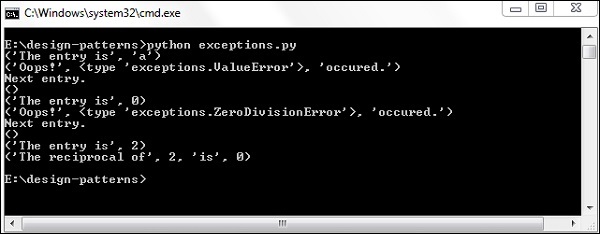Python设计模式 并发性
并发性常常被误解为并行性。并发意味着对独立的代码进行调度,以系统的方式执行。本章重点介绍了使用Python为操作系统执行并发性。
下面的程序有助于执行操作系统的并发性 —
import os
import time
import threading
import multiprocessing
NUM_WORKERS = 4
def only_sleep():
print("PID: %s, Process Name: %s, Thread Name: %s" % (
os.getpid(),
multiprocessing.current_process().name,
threading.current_thread().name)
)
time.sleep(1)
def crunch_numbers():
print("PID: %s, Process Name: %s, Thread Name: %s" % (
os.getpid(),
multiprocessing.current_process().name,
threading.current_thread().name)
)
x = 0
while x < 10000000:
x += 1
for _ in range(NUM_WORKERS):
only_sleep()
end_time = time.time()
print("Serial time=", end_time - start_time)
# Run tasks using threads
start_time = time.time()
threads = [threading.Thread(target=only_sleep) for _ in range(NUM_WORKERS)]
[thread.start() for thread in threads]
[thread.join() for thread in threads]
end_time = time.time()
print("Threads time=", end_time - start_time)
# Run tasks using processes
start_time = time.time()
processes = [multiprocessing.Process(target=only_sleep()) for _ in range(NUM_WORKERS)]
[process.start() for process in processes]
[process.join() for process in processes]
end_time = time.time()
print("Parallel time=", end_time - start_time)
输出
上述程序产生了以下输出 –

解释
“multiprocessing “是一个类似于线程模块的包。这个包支持本地和远程并发。由于这个模块,程序员获得了在给定系统上使用多个进程的优势。
 极客教程
极客教程